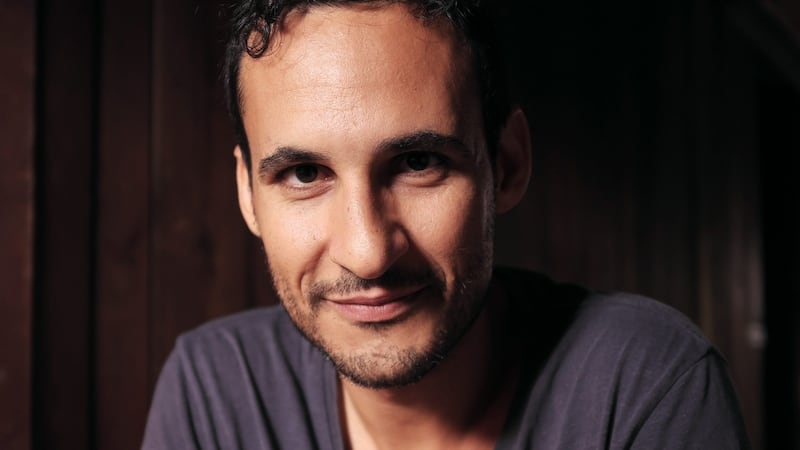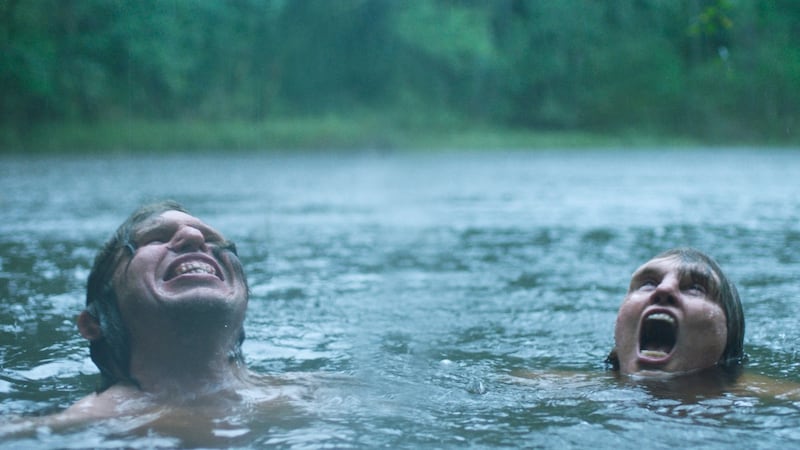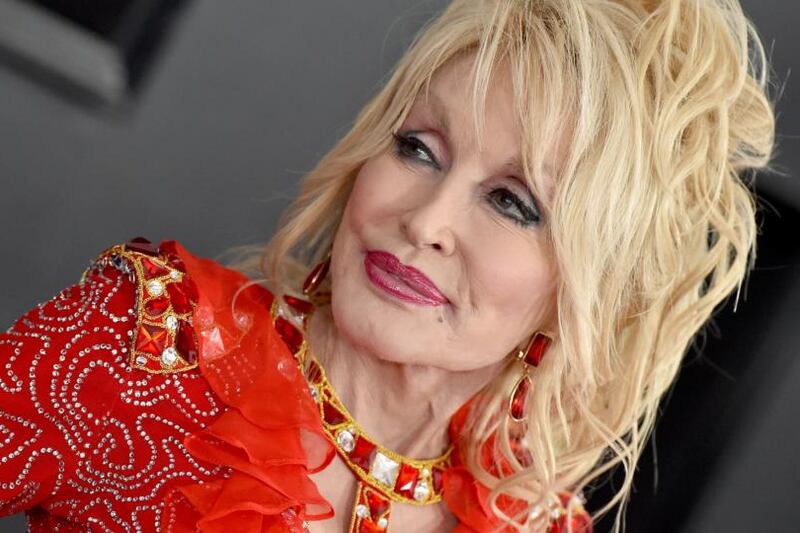Just two months into 2019 and the search for this year’s most original film is all over. Ali Abbasi’s Border, the winner of Un Certain Regard at Cannes and an adaptation of a novelette by Let the Right One In author John Ajvide Lindqvist, concerns a strange-looking security border officer named Tina (played by Eva Melander from Rebecka Martinsson: Arctic Murders) with a “nose for evil” and an equally strange looking suspect (Eero Milonoff). If neither of them look entirely human that’s because they’re not. But that is just the first of Border’s many surprises. Sit tight for – mild spoiler alert – genocidal rage and intersex troll encounters.
The Iranian-born Abbasi, who came to international prominence in 2016 with the pregnancy horror Shelley, drew more on “the experience of coming from a minority” rather than Norse mythology for his new supernatural thriller.
“I’ll be frank with you,” laughs Abbasi. “I can say that I’ve read the Wikipedia page on trolls. That’s about as far as my research went. Honestly, I didn’t look at this as a troll movie. I just thought of it as a character that is very particular. She needs a name and she needs a story of origin and that comes from the short story. I think John Ajvide Lindqvist done a great job of creating his own mythology. I didn’t feel I needed to add anything to that. The best chance I had of adapting this was to tackle it as an outsider with the knowledge and feeling of an outsider. The experience of being outsider is not exclusive to if you’re brown in a white society, or if you’re a woman in a man-dominated society. I think you can be perfectly fit for. I think every person has experienced how it feels to be an outsider, and that’s why, in a strange way, everybody is an outsider.”

Border, which features a disturbing subplot concerning a paedophile ring, does share some DNA with Nordic noir. More accurately, it is firmly located within the current vogue for Scandinavian magic realism, a movement spearheaded by authors including Lindqvist, Jan Kjaerstad, Ib Michael, Peter Hoeg, and Kjartan Flogstad.
“Scandinavian film tradition is very rooted in theatre and drama and social realism,” says Abbasi. “I think that’s been the importance of Lindqvist. He’s introduced a kind of literature where universes overlap. There’s no hard boundary between what is real and what is fantasy. I’m interested in this kind of elevated world. Even if he is known as a fantasy writer, underneath there’s always some real conflict going on, which makes it hard to just see his work as ‘fantasy literature.’”
Never mind Christian Bale’s piling on the pounds for Vice. Swedish actor Melander is a svelte, blonde 43-year-old who, in real life, is simply unrecognisable as Tina.
“It was a leap of faith for all of us,” says Abbasi. “We genuinely hoped this worked but we had no way of knowing, not until the moment Eva stepped out of the make-up chair.”
The Academy love a physical transformation and transformations don’t get more dramatic than Melander’s turn as Tina, a customs officer who might win a beauty contest in the Orc-concentrated regions of Middle Earth. Abbasi, had asked Melander if she could put on 10kg for the role. She gained 18kg instead, eating every 90 minutes and working out with a trainer to broaden her body underneath the fat.
“I was just crazy determined,” says Melander. “I wasn’t going to let my ego get in the way of the character. It was like an engineering project. By the time we started shooting, my body looked and moved differently.”
That was just the beginning. One of the most remarkable aspects of the film is Göran Lundström’s Oscar-nominated hair and make-up. A schedule clash saw Lundström, who has previously worked on Doctor Who, Harry Potter and X-Men: First Class, head to National Geographic’s Genius while Border was in production, leaving regular collaborator, Pamela Goldammer, to handle the four hours of daily application.
“It was a very detailed process,” says Melander. “And you were just sitting there. It was a challenge just sitting. You couldn’t do anything like watch a film. You couldn’t sleep. I had to get used to sort of meditating myself away.”
Both Melander and Milonoff (best known for his work in The Happiest Day in the Life of Olli Mäki) were required to be in the make-up chair at 2am every morning in order to be ready for a 10-hour shooting schedule starting at 8am. Oh, and they needed another hour to take it all off again.
“It was hard work,” says Milonoff. “But every day when I stood up from the make-up chair I saw that it was worth it. The make-up artist did such an amazing job. It took time to understand what you could and couldn’t do from under the prosthetics, to find out what kind of expressions were possible.”
“I’m an actor so my face is my tool box,” adds Melander. “So this was as if somebody had just glued all my toolbox together. And I had to learn how to use the tools in a new way. That was a big part of the work. But also that was woven into the character. She couldn’t afford big expressions as even a smile would scare people.”
There were, additionally, latex body suits required for scenes in which the otherworldly couple romp through woodland and lakes.

“Swimming in the lake was the hardest scene for me,” says Melander. “It was freezing and we were there for a long time. During the winter time I’m used to actually getting into a frozen lake with a big hole in the ice. But I didn’t know what was in the lake when we were shooting!”
Milonoff, meanwhile, had a bizarre “birthing” scene to contend with.
“It was a super nice scene,” he says. “I have two daughters so I’ve seen labour a couple of times. It’s a different kind of experience when you are in the middle of a forest and it’s cold and you have the position yourself in certain ways so the camera can’t see see certain things. But we had a director who made a kind of circle so there was nothing to be afraid of.”
Having studied a chemical engineering degree in Iran, Abbasi moved to Sweden to study architecture when he was 20. He graduated with a BA only to decide he was far more interested in the night classes he had been taking at Swedish Film Institute’s Cinematheque over several years. He enrolled in the Danish National Film School and graduated in 2011. Although based in Copenhagen, he continues to hold an Iranian passport, which could have prevented him from travelling to the US due to the travel ban introduced by Donald Trump. Happily, Abbasi proved an exception to the rule.
“I’ve been to the American embassy so many times, they all recognise me,” says the film-maker. “Now they keep asking: how’s it going with the Oscar campaign?”
Border is released on March 8th











